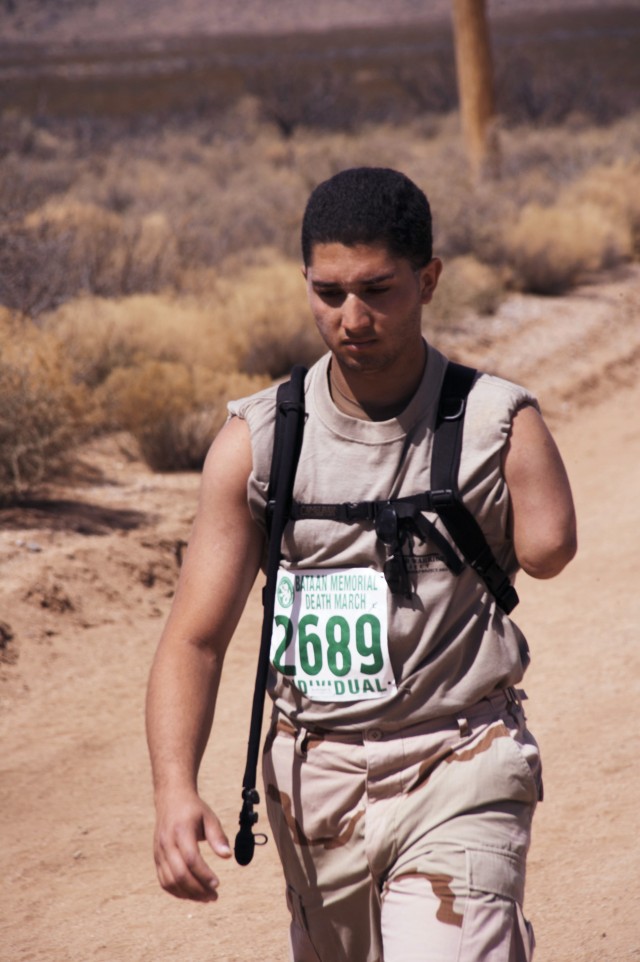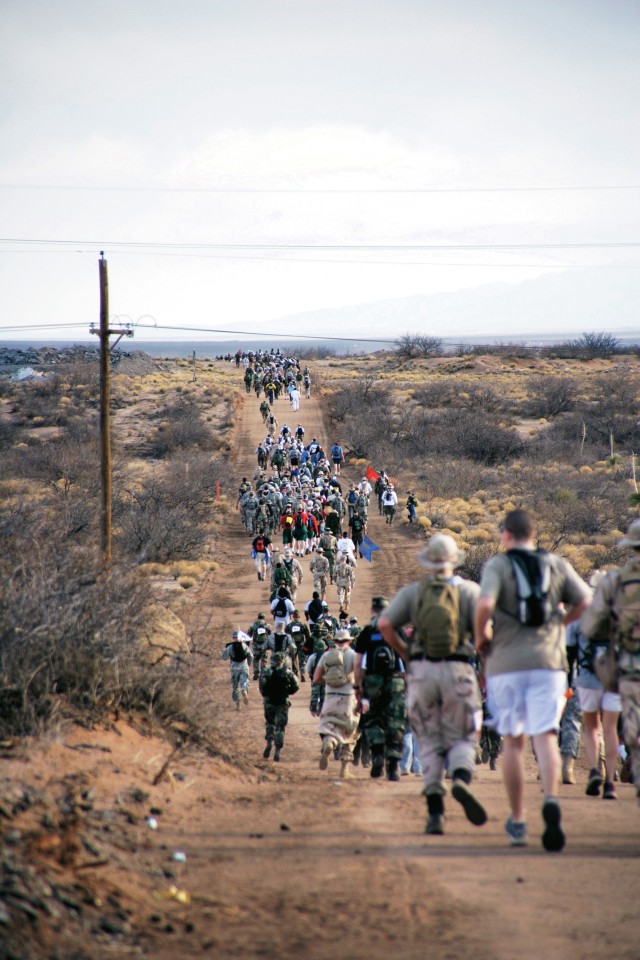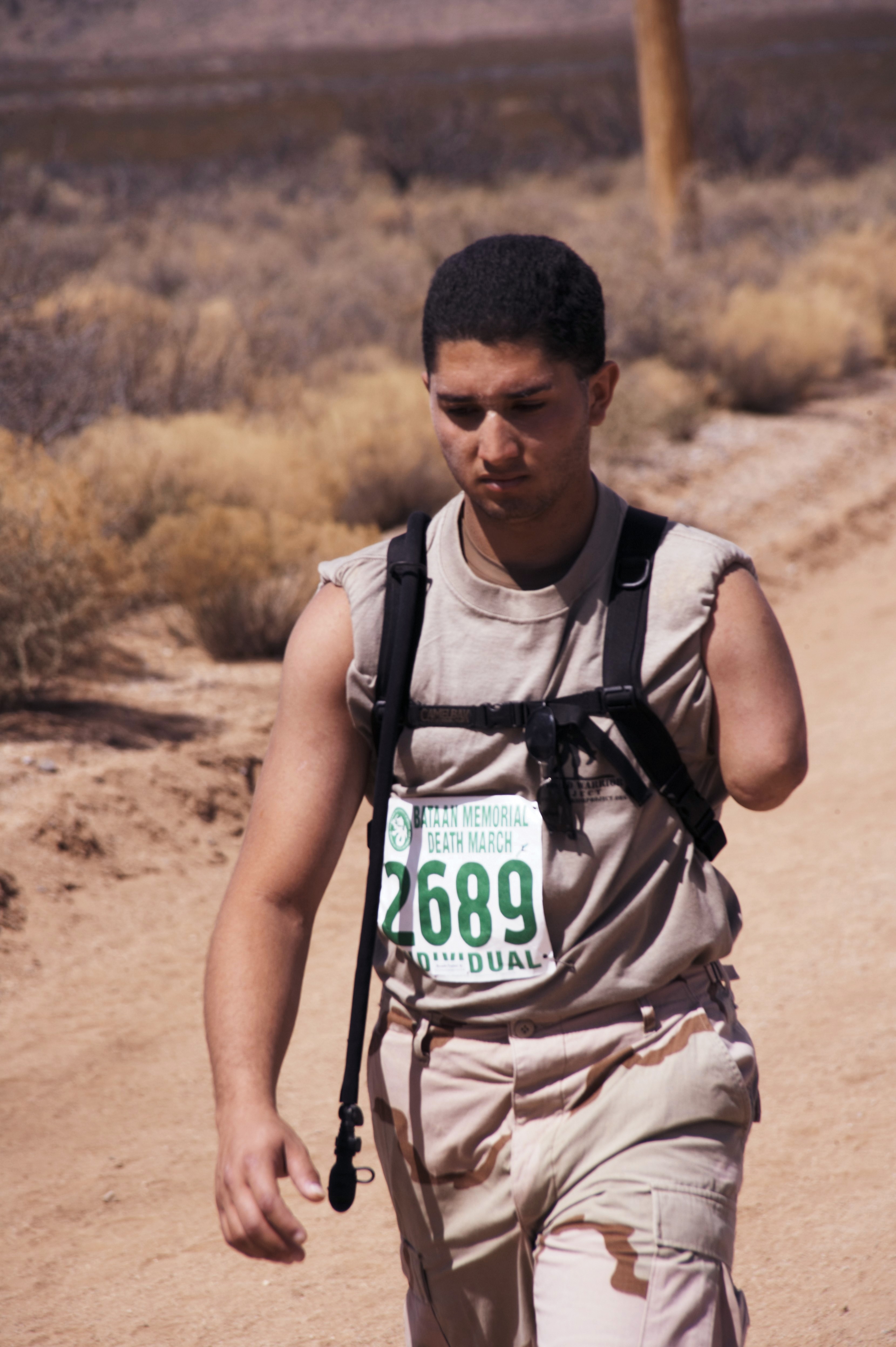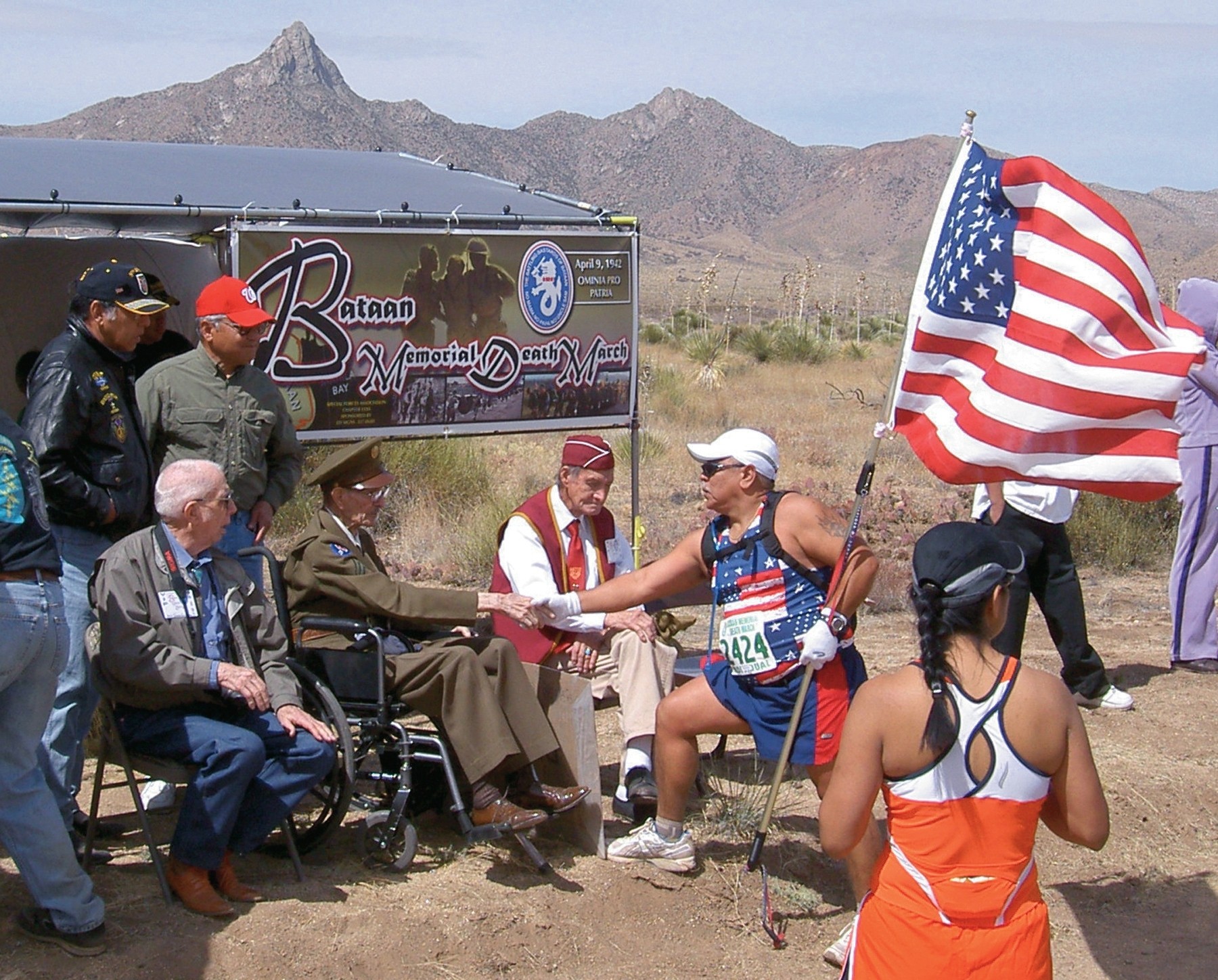<i>Online registration for the Bataan Memorial Death March, to be held March 25 at White Sands Missile Range, N.M., continues through midnight March 18. Late online registration is March 19 through midnight March 22. For details go to <a href="http://www.bataanmarch.com"target=_blank> www.bataanmarch.com</a></i>.
WASHINTON (Army News Service, March 7, 2007) - Thousands of Soldiers and civilians converge at White Sands Missile Range, N.M., each spring to share the common experiences of blisters, sore muscles and exhaustion, as they undertake the grueling Bataan Memorial Death March.
"It's an amazing experience," said 2nd Lt. Todd Perry, a member of Team America, which won the Military Heavy Coed Division at last year's march. He said the camaraderie, sense of accomplishment and opportunity to pay respect to older veterans are rewards participants take from the march.
Ray Pickering, a New Mexico State University ROTC student, along with 134 other people, started the memorial march in 1987 by hiking 22 miles from the university's Las Cruces campus to Baylor Canyon, in southern New Mexico.
Over the years, the event grew in popularity and length to the marathon standard, 26.2 miles, and was relocated inside the boundary of WSMR.
Now entering its 18th year, the memorial march honors the Soldiers who defended the islands of Luzon, Corregidor, and the harbor-defense forts of the Philippines at the onset of World War II. They fought in a malaria-infested region, surviving on half- or quarter-rations, with little or no medical care, outdated equipment and virtually no air support.
On April 9, 1942, tens of thousands of American and Filipino soldiers surrendered to Japanese forces. They were marched for days in the scorching heat through the Philippine jungles. Thousands died. Those who survived faced death or years of hardship in prisoner-of-war camps.
The nearly 3,900 Soldiers and civilians who participated in the 2006 Bataan Memorial Death March represented the Army and all 50 states, as well as the United Kingdom, Germany, Canada and South Korea, said Command Sgt. Maj. Allen Fritzsching of the U.S. Army Developmental Test Command at Aberdeen Proving Ground, Md.
Survivors of the actual World War II death march were present and received recognition for their wartime service and sacrifices.
Team and individual marchers compete in various categories, such as "Military Men's Heavy," for military members willing to shoulder heavy rucksacks, and "Military Men's Light," in which marchers wear a pistol belt and web gear instead of rucksacks. Civilian marchers compete in similar categories.
Other participants in the 2006 event included Brig. Gen. Michael Combest, commander of the Aberdeen, Md.,-based DTC and his aide de camp, Capt. Michael Lind. It was the second such march for Combest and Lind, who both participated in 2005, and the first for Fritzsching.
Combest finished first in the men's military heavy category, age group 50-59. His DTC colleagues also fared well - Lind finished the march in 6 hours and 20 minutes, making him ninth to cross the finish line out of 118 finishers in his category and 20-29 age group. Fritzsching completed the march in 7 hours and 47 minutes, making him the 12th-place finisher out of 35 in the military men's heavy category, ages 30-39.
"We were physically and mentally ready for the most demanding marathon in the world," Lind said. "Meeting those ex-POWs and hearing their stories and trials gives fighting for freedom a much higher meaning. We are a part of the greatest Army in the world, not just because of how we fight, but why we fight."
Combat veterans who lost limbs in combat in Afghanistan and Iraq came to White Sands from Walter Reed Army Medical Center in Washington, D.C., and Brooke Army Medical Center at Fort Sam Houston, Texas, to march together as the "Amputeam."
Soldiers' annual participation in the White Sands march not only honors the victims and survivors of the atrocities in the Philippines, but demonstrates that today's military, like the U.S. military that fought in World War II, is tough and prepared to accept any challenge, Fritzsching said.
The stamina needed for a marathon march over rough terrain comes from plenty of exercise and training.
The three Soldiers from APG, who trained both together and separately, carried packs that weighed between 35 and 40 pounds when they road marched and ran varying and increasing distances near their home installation.
One of their training routes covered a nearly 19-mile distance, something the three of them completed three times before the White Sands event. Not content to merely speed march with a rucksack, Lind ran the distance carrying his 36-pound pack and finished after about 3 hours and 20 minutes.
"We trained differently this year than last year," Combest said. "Last year we completed a lot of shorter marches, from six to eight or nine miles. This year we did fewer of them, but they were a lot longer. We did three 19-milers, five 12-milers and a handful of 10-milers. That made a difference. It was less wearing on my feet, my joints and my legs. The other thing I found that was very helpful was to take the rucksack, put 40 pounds in it and get on the Stairmaster."
The three Soldiers said the challenging training regimen gave them a considerable edge during the March 2006 event.
Despite some difficulties during that march - Lind suffered burst membranes in his nose and pulled muscles in his leg and had to walk the last 15 miles - "I will definitely be doing it again in March 2007," Lind said.
Combest, Lind and Fritzsching recommend the Bataan Memorial Death March to all Soldiers and civilians looking for a fulfilling physical challenge.
(Mike Cast works in the Developmental Test Command Public Affairs Office. Monte Marlin works at the Public Affairs Office at White Sands Missile Range. This story first appeared in the November 2006 issue of Soldiers magazine.)






Social Sharing